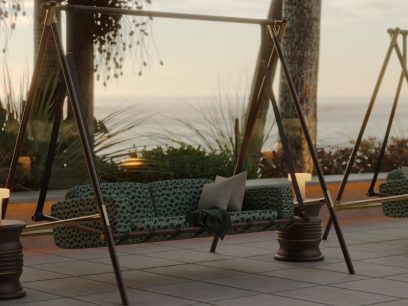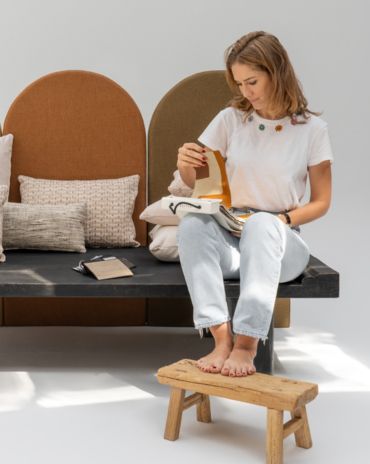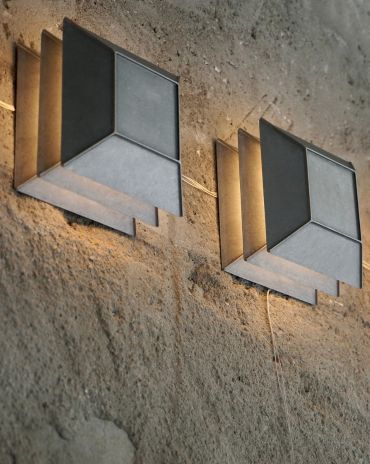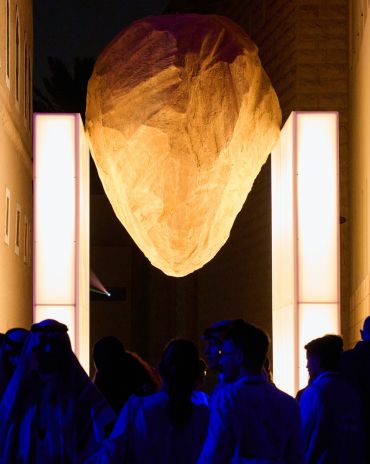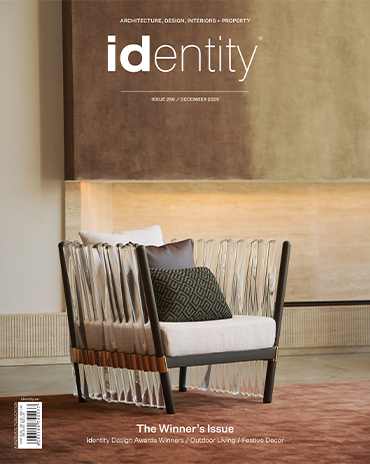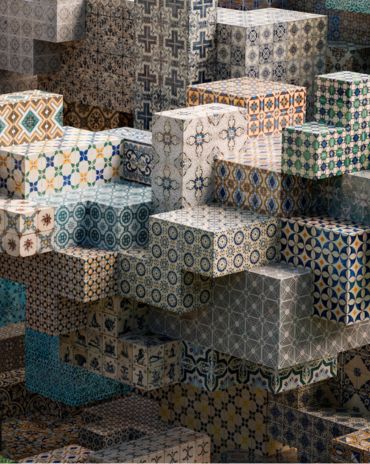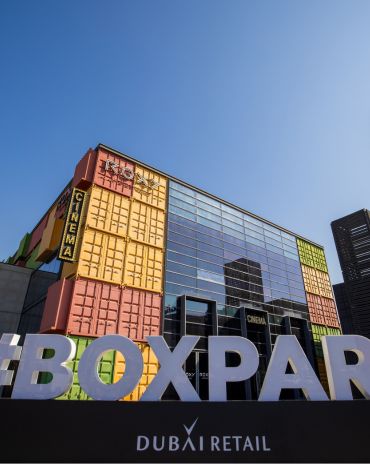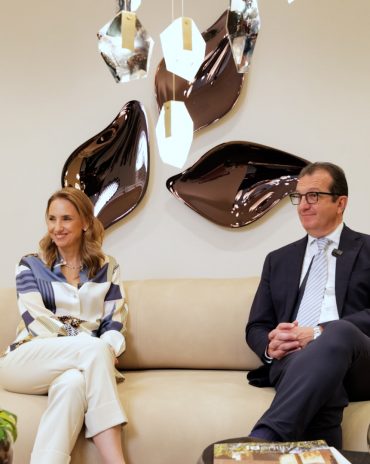Copyright © 2025 Motivate Media Group. All rights reserved.
A Wave of Innovative Design
Haikou Gaoxingli Insun Cinema creates an unforgettable cinema experience by merging wave-like brick architecture with coastal inspiration
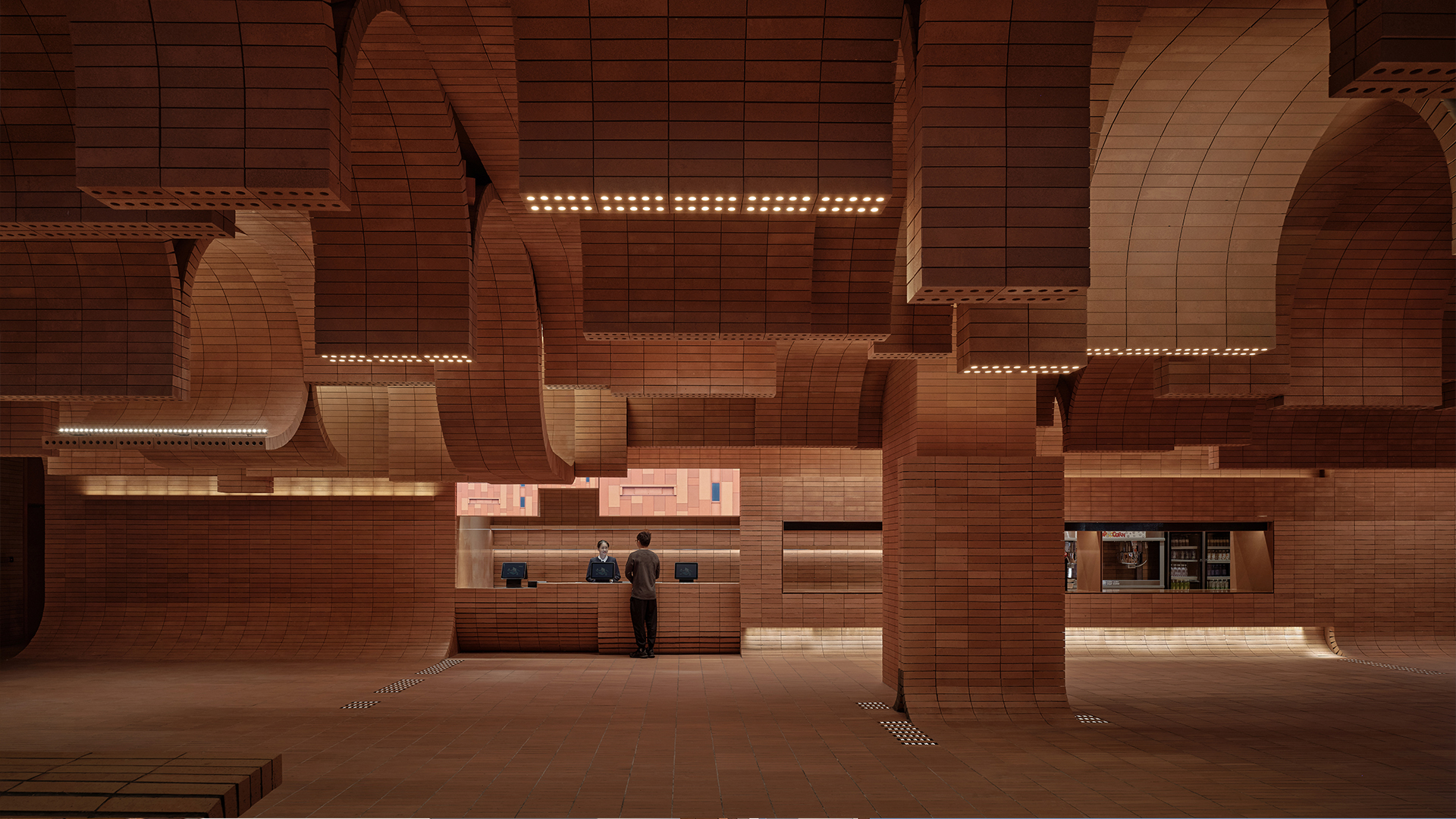
One Plus Partnership created the architectural marvel that is the Haikou Gaoxingli Insun Cinema as a means of assisting the film industry. Located on Hainan Island’s northern coast and surrounded by the South China Sea, the cinema’s biophilic architecture translates the sea’s compelling narrative into a tangible architectural form. Wanting to be unique, the studio opted against using ocean blue and instead decided to use the material, brick, as the theme of the design. The bricks, which are made of sand, act as a motif for the ocean. The material is transformed into wave-like structures, showcasing the convergence of form and flow and conveying a sense of fluidity and movement. By mimicking the ocean waves through curvilinear shapes, the cinematic design adds a dynamic yet naturalistic quality to the space. This biophilic design choice can be seen from any angle in the cinema, allowing visitors to be completely immersed in the architecture. Additionally, the mono-material strategy provides for a cohesive, unified aesthetic that is both timeless and durable.
As visitors enter the cinema, they are greeted by a lobby that encapsulates the essence of the cinematic experience. The architectural design uses a surrealistic narrative in which the design mimics the cinematic experience, allowing visitors to transcend into a space of visual storytelling. Every wave shape has been transformed into a counter or booth. The tables and chairs have been carefully arranged, with the curved ends fanning out like a bell and the tips of the waves meeting.
The use of negative space in this immersive design enables visitors to engage with their imaginations, letting the negative void narrate a story. Additionally, the negative space and monolithic material choice work together to merge different areas of the cinema without any abrupt transitions – mirroring the seamless nature of waves joining together.
A unique feature of the cinema is the incorporation of natural sunlight, a rarity in traditional cinema design. Strategically placed windows highlight the warmth and texture of the brickwork while seamlessly bringing natural light into the area. This brightness complements the varying lengths and rigid nature of the bricks as it subtly enhances the sense of movement between the wave-line structures.
Lighting plays an integral role in the ambiance of this cinema. The placement of lights within the brick structure supports an ambient but also soft atmosphere, where the lights reflect the ephemeral nature of cinema. This is further solidified by the fact that the placement and size of the lights are an abstract interpretation of old-school film strips. Thus, the lighting highlights the contours of the wave-like formations while paying tribute to the cinematic experience. The interplay of light and shadow adds a layer of depth to the space, making it both visually engaging and comfortable.
One Plus Partnership has emphasised materiality, craftsmanship and locality, creating a surreal, cinematic environment using a single material with a monochromatic colour palette. The dramatic and skilful arrangement of the cinema’s design gives the illusion of a standalone cinematic experience, which is why One Plus Partnership believes that the cinema is a perfect fit for the drama genre.
Photography by Jonathan Leijunhofvund
Read more architecture features here.
The Latest
Maison Aimée Opens Its New Flagship Showroom
The Dubai-based design house opens its new showroom at the Kia building in Al Quoz.
Crafting Heritage: David and Nicolas on Abu Dhabi’s Equestrian Spaces
Inside the philosophy, collaboration, and vision behind the Equestrian Library and Saddle Workshop.
Contemporary Sensibilities, Historical Context
Mario Tsai takes us behind the making of his iconic piece – the Pagoda
Nebras Aljoaib Unveils a Passage Between Light and Stone
Between raw stone and responsive light, Riyadh steps into a space shaped by memory and momentum.
Reviving Heritage
Qasr Bin Kadsa in Baljurashi, Al-Baha, Saudi Arabia will be restored and reimagined as a boutique heritage hotel
Alserkal x Design Miami: A Cultural Bridge for Collectible Design
Alserkal and Design Miami announce one of a kind collaboration.
Minotticucine Opens its First Luxury Kitchen Showroom in Dubai
The brand will showcase its novelties at the Purity showroom in Dubai
Where Design Meets Experience
Fady Friberg has created a space that unites more than 70 brands under one roof, fostering community connection while delivering an experience unlike any other
Read ‘The Winner’s Issue’ – Note from the editor
Read the December issue now.
Art Dubai 2026 – What to Expect
The unveils new sections and global collaborations under new Director Dunja Gottweis.
‘One Nation’ Brings Art to Boxpark
A vibrant tribute to Emirati creativity.
In conversation with Karine Obegi and Mauro Nastri
We caught up with Karine Obegi, CEO of OBEGI Home and Mauro Nastri, Global Export Manager of Italian brand Porada, at their collaborative stand in Downtown Design.

